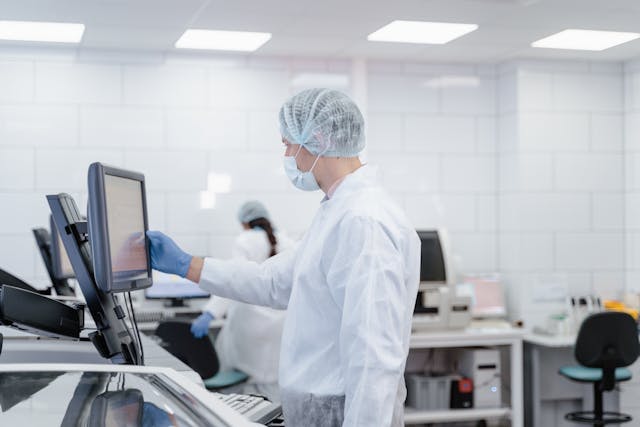The cleanroom has always been a marvel of engineering. It is the pristine, controlled environment that makes the modern world possible, from the life-saving medicines we rely on to the powerful microchips in our smartphones. The fundamental goal of a cleanroom has always been the same: to create a space that is as close to a perfect, particle-free vacuum as possible.
But in the demanding world of modern manufacturing and research, simply building a clean space is no longer enough. The key to operational excellence is a suite of advanced technologies that can actively monitor, control, and document the environment in real-time. A cleanroom is more than just a well-sealed room with great filters; it’s a dynamic, data-driven ecosystem. This technology is making a profound difference in the efficiency, reliability, and compliance of these critical environments.
Here’s a look at the key ways technology is making cleanrooms smarter than ever before.
1- Real-Time, Continuous Environmental Monitoring
In the past, ensuring a cleanroom was clean was a manual and periodic process. A technician would have to use a handheld particle counter to take spot readings at a few different locations, a few times a day. This only provided a brief snapshot of the room’s condition.
The modern cleanroom, however, is equipped with a network of sophisticated sensors that act as a 24/7 nervous system. These sensors continuously monitor a host of critical parameters in real-time: airborne particle counts, temperature and humidity, and air pressure differentials.
This data is fed to a central monitoring system that can provide an instant alert the moment any parameter drifts out of its specified range. This allows a manager to take immediate corrective action, preventing a small deviation from turning into a major contamination event that could ruin an entire batch of product.
2- Smart and Adaptive HVAC Systems
The HVAC system is the heart and lungs of any cleanroom, responsible for delivering the ultra-clean, filtered air. Modern, smart HVAC systems are now able to integrate directly with the real-time monitoring sensors.
This creates an intelligent feedback loop. If the system detects a slight increase in the particle count in one area of the room, it can automatically increase the airflow from the HEPA filters in that specific zone to quickly clear the air. This adaptive control not only ensures a more stable and reliable environment but can also save a significant amount of energy. Instead of running at 100% capacity 24/7, the system can intelligently ramp up or down as needed, reducing a cleanroom’s massive energy consumption.
3- The Rise of Robotics and Automation
The single biggest source of contamination in any cleanroom is the people working inside it. Our bodies are constantly shedding millions of tiny particles of skin and hair. This is why extensive “bunny suit” gowning procedures are necessary.
To reduce this human-generated contamination, the most advanced cleanrooms are increasingly turning to robotics and automation.
- In semiconductor manufacturing, robotic arms can handle the delicate silicon wafers with a level of precision and cleanliness that a human never could.
- In pharmaceuticals, automated, sealed filling lines can process and package sterile drugs with minimal human intervention.
- Automated Guided Vehicles (AGVs) can be used to transport materials from one part of the cleanroom to another.
As this technology advances, the “lights-out” cleanroom, with virtually no human presence, is becoming a reality.
4- Advanced Decontamination and Sterilization
Cleaning a cleanroom is a meticulous and time-consuming process. Modern technology is making this faster and more effective. Instead of a team of people manually wiping down every single surface with a sterile solution, many pharmaceutical cleanrooms now use automated vaporized hydrogen peroxide (VHP) systems.
This technology fills the entire sealed room with a vaporized hydrogen peroxide gas that is able to sterilize every single surface, even in the hard-to-reach cracks and crevices. The gas is then safely broken down back into harmless water and oxygen. This automated process provides a much higher level of sterilization assurance than a manual cleaning ever could.
The cleanroom of the future is an intelligent and data-rich environment. These technologies are essential for meeting the ever-increasing demands for quality, purity, and efficiency in the world’s most advanced industries.




























